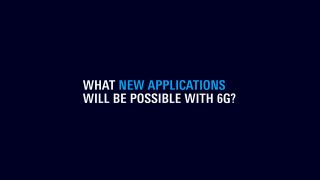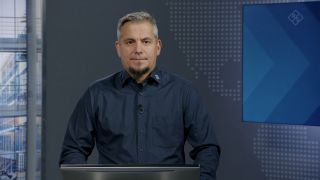La strada che conduce al 6G
6G: Il futuro della comunicazione wireless
La prossima generazione della comunicazione wireless si basa su componenti tecnologici rivoluzionari che richiedono nuove modalità di test.
Ogni generazione di rete mobile offre nuove funzionalità e un'infinità di nuove opportunità. Mentre le implementazioni della rete 5G New Radio (5G NR) sono in pieno svolgimento, il 6G sta già iniziando a prendere forma e si prevede che venga lanciato intorno al 2030.
Rohde & Schwarz è stata strettamente coinvolta in questo processo fin dall'inizio e sostiene attivamente le attività di ricerca fondamentale sul 6G in corso presso organizzazioni, università e istituti di ricerca in tutta Europa, negli Stati Uniti e in Giappone. Insieme ai nostri partner e clienti, stiamo adattando attivamente le nostre soluzioni di test per supportare questa fase iniziale di ricerca e per identificare i componenti tecnologici che potrebbero diventare parte di uno standard 6G.
Guardando al futuro, Rohde & Schwarz è anche partner in diversi progetti di ricerca 6G finanziati dal governo tedesco. Il più importante è il progetto 6G-Access, la rete delle reti, l'automazione e la semplificazione (6G-ANNA).
6G-ANNA è un progetto triennale avviato dal Ministero Federale Tedesco dell'Istruzione e della Ricerca per il progresso della tecnologia 6G in Germania con l'obiettivo di sviluppare un piano olistico per la prossima generazione di standard cellulari che coinvolga l'architettura end-to-end. In qualità di partner industriale, Rohde & Schwarz contribuisce al progetto con la sua ricerca esistente su un'interfaccia radio nativa IA per il 6G, in particolare per un ricevitore neurale con modulazione personalizzata.
Rohde & Schwarz è inoltre coinvolta in una serie di altri progetti di ricerca 6G, come ad esempio:
- 6G-TakeOff: un progetto per lo sviluppo dell'architettura di rete 6G che mira a introdurre reti di comunicazione 3D standardizzate composte da stazioni di terra, piattaforme aeroportuali e satelliti. È necessario sviluppare questo tipo di concetti innovativi per la gestione della rete. Rohde & Schwarz sta lavorando insieme ad altre aziende del settore delle telecomunicazioni e dell'aerospazio a una soluzione congiunta per fornire connettività.
- KOMSENS-6G: un progetto sull'integrazione della tecnologia dei sensori nei sistemi di comunicazione 6G che consente applicazioni future nell'industria 4.0 e nella mobilità autonoma con particolare attenzione all'integrazione della tecnologia radar nelle reti 6G.
- 6G-LICRIS: un progetto per sviluppare superfici intelligenti riconfigurabili utilizzando la tecnologia dei cristalli liquidi per i futuri standard 6G. L'obiettivo è quello di introdurre nuovi materiali basati sui cristalli liquidi, più adatti a frequenze più elevate.
- 6G-ADLANTIK: un progetto incentrato sullo sviluppo di componenti per la gamma di frequenze THz basati sull'integrazione fotonica ed elettronica. Questi componenti di nuova concezione possono essere utilizzati per misure innovative e trasferimenti di dati più rapidi.
- 6G-TERAKOM: un progetto per esplorare e sviluppare un sistema di comunicazione wireless appena al di sotto della gamma dei terahertz (banda D) con antenne integrate. Ciò contribuirà a preparare gli ecosistemi applicativi industriali in Germania per la futura sesta generazione di comunicazioni mobili.























